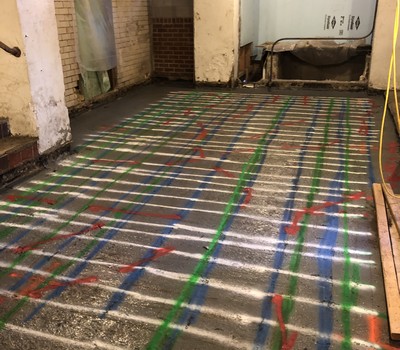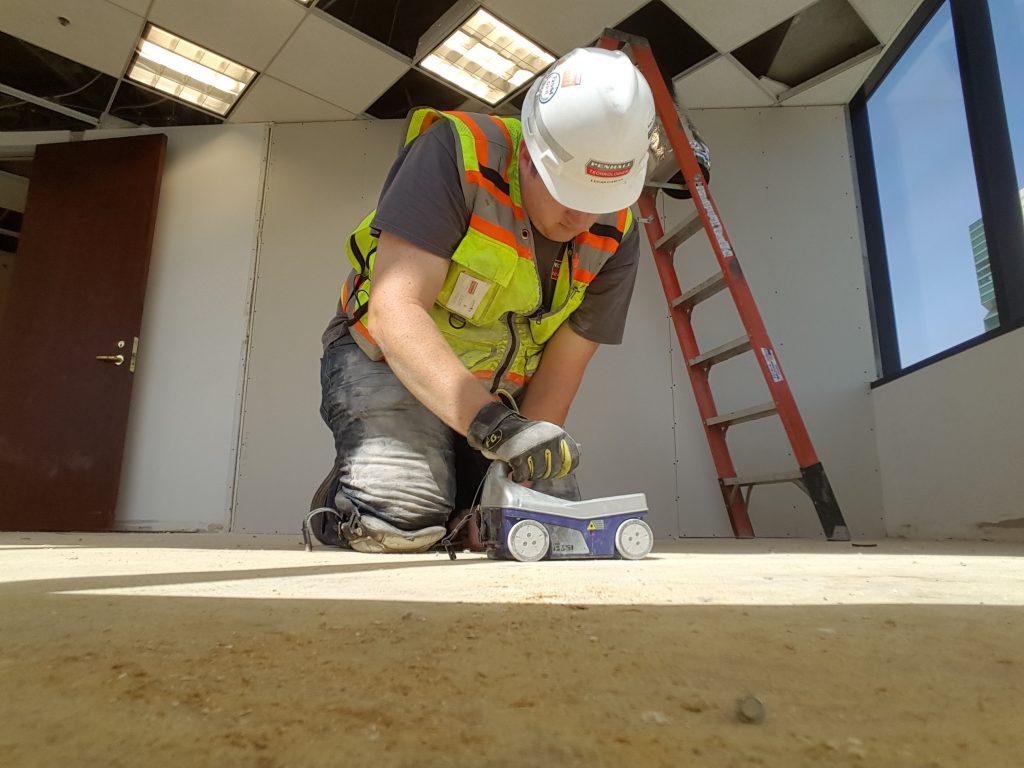Unveil the Transformative Power of Concrete Scanning in Making Best Use Of Efficiency and Safety And Security
Concrete scanning has arised as an important device in the building sector, using exceptional benefits in boosting project performance and guaranteeing safety and security criteria. The transformative power of concrete scanning lies in its ability to give real-time data and in-depth insights, reinventing just how jobs are planned and executed.
Value of Concrete Scanning
Guaranteeing the architectural integrity and safety of building and construction tasks begins with the crucial step of carrying out comprehensive concrete scanning. Concrete scanning is a non-destructive method made use of to identify and map subsurface aspects within concrete frameworks.
The relevance of concrete scanning can not be overemphasized, as it plays an important duty in stopping crashes, decreasing project hold-ups, and making certain the long-term sturdiness of the construction. By identifying potential dangers before the building and construction phase begins, builders can implement appropriate precaution and make notified choices regarding the design and implementation of the task. In addition, concrete scanning helps in enhancing project timelines and budget by staying clear of unexpected costs and hold-ups that may occur because of unanticipated obstructions within the concrete. Inevitably, purchasing extensive concrete scanning is a positive technique that boosts both effectiveness and safety in building jobs.
Exactly How Concrete Scanning Functions
Concrete scanning operates as a crucial tool in building tasks by employing sophisticated modern technologies to detect and map subsurface elements without triggering structural damages. Ground Penetrating Radar (GPR) and Electromagnetic Induction (EMI) are two main methods utilized in concrete scanning.
During the scanning process, the data gathered is evaluated in real-time, permitting prompt recognition of possible hazards or challenges under the surface. This information help in decision-making, ensuring that building and construction activities proceed safely and efficiently. Furthermore, 3D imaging software can be made use of to develop thorough maps of the subsurface components, better boosting job planning and execution. By utilizing these innovative technologies, concrete scanning substantially minimizes the threat of expensive damages and injuries on building websites.
Benefits of Concrete Scanning
One of the main benefits of concrete scanning is the capability to find and situate ingrained things such as rebar, post-tension cords, and conduits accurately. Concrete scanning aids in planning and making much more efficiently, as it gives exact information concerning the location and depth of structural parts.

Instance Research Studies: Concrete Scanning Success

In another instance, a building firm used 3D concrete scanning to assess the condition of aging concrete frameworks in a historical building. visit site The comprehensive scans provided valuable insights right into the degree of deterioration and aided focus on upkeep initiatives successfully. By proactively dealing with areas of problem recognized via scanning, the company was able to expand the life expectancy of the framework and ensure resident safety and security.
These case studies underscore the transformative power of concrete scanning in boosting efficiency, precision, and safety in building projects.
Executing Concrete Scanning in Projects
Carrying out innovative scanning modern technologies during construction tasks has actually become significantly vital for improving precision and security. By incorporating concrete scanning right into job preparation and implementation, building and construction groups can recognize prospective dangers, such as rebar or post-tension cables, hidden within concrete structures. This positive strategy reduces the threat of crashes, hold-ups, and pricey rework, inevitably causing more reliable task timelines and budget plans.
To implement concrete scanning efficiently, project supervisors must team up very closely with skilled scanning experts to determine one of the most appropriate scanning strategies for the details project requirements. Engaging scanning experts from the onset of a task makes it possible for the group to develop extensive scanning plans that deal with vital locations of problem and make certain complete data collection.
Additionally, including concrete scanning right into regular job process can simplify decision-making procedures, as real-time scan information supplies prompt understandings into the condition of concrete frameworks - Concrete Scanning. This data-driven method facilitates educated analytic and enables groups to make my sources changes promptly, cultivating a culture of effectiveness and security throughout the task lifecycle

Verdict
In final thought, concrete scanning plays a critical function in boosting effectiveness and safety in construction projects. By utilizing sophisticated modern technology to discover and map out underlying frameworks within concrete, this procedure assists to stop costly mistakes, ensure architectural stability, and decrease dangers on site. With the capability to discover surprise aspects and offer exact data, concrete scanning proves to be an important tool for maximizing job end results and making the most of general success.
Concrete scanning is a non-destructive technique used to spot and map subsurface components within concrete structures. In addition, concrete scanning helps in maximizing project timelines and budget by preventing unexpected costs and hold-ups that may occur due to unanticipated obstructions within the concrete. One notable instance research involves a large improvement job where concrete scanning played an essential duty in making sure job success.In one more case, a building and construction company utilized 3D concrete scanning to evaluate the problem of maturing concrete structures in a historic building. By integrating concrete scanning right into job preparation and implementation, building groups can identify prospective hazards, such as rebar or post-tension cables, hidden within concrete structures.